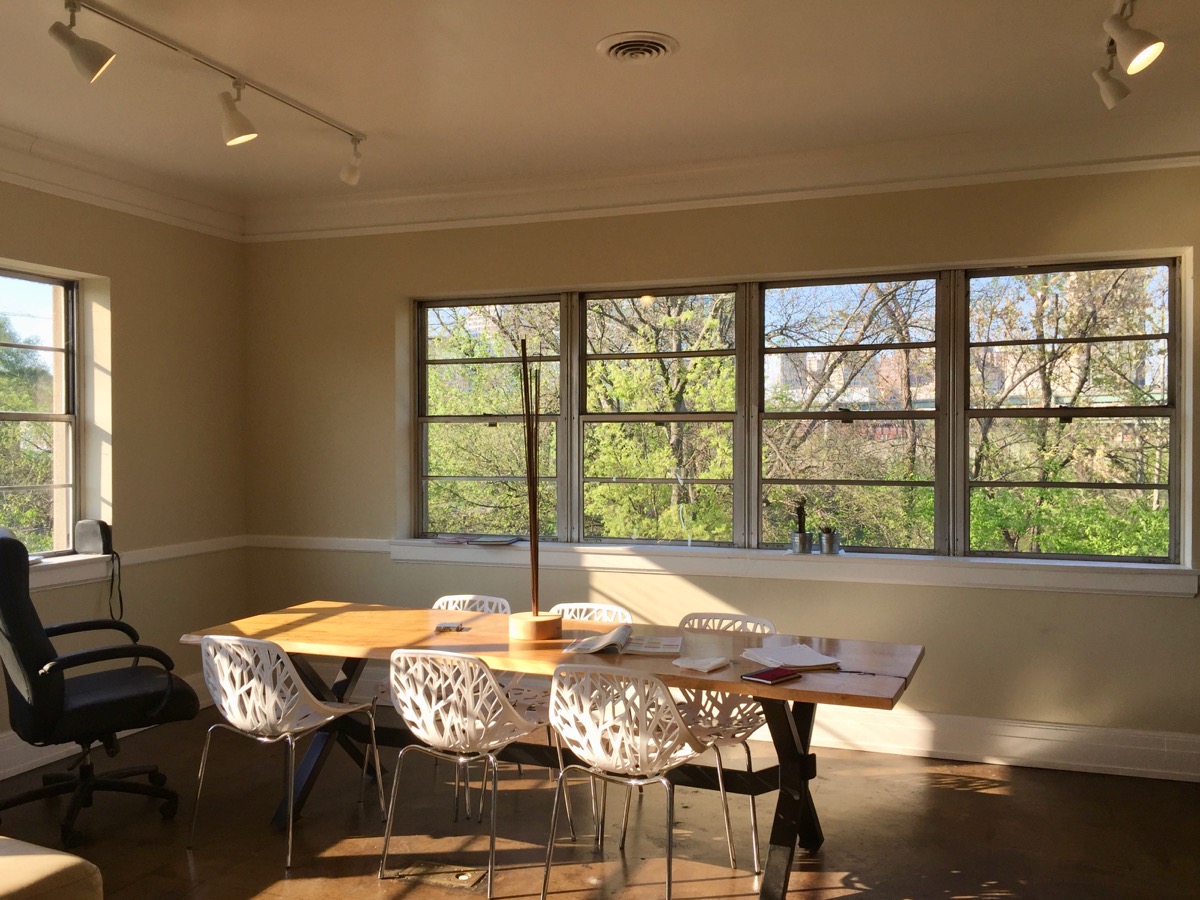从Church Hill观望的里士满城市天际线,近处为Shockoe Bottom, 远处为市中心。
Shockoe Bottom是里士满市区内历史最悠久的区域之一,这里的街区肌理仍然在很大程度上保留了陆军上校William Mayo在1737年作的里士满城市规划。Shockoe Bottom在里士满市中心和Church Hill(直译“教堂山”)之间,沿着James River(詹姆斯河)分布。它是一个长条型的城市社区,并且是如今市区内一个富有活力的居住,餐饮和夜生活娱乐中心。
Shockoe Bottom区域内的一个loft工作室/住宅混合体的室内景。
在历史上,Shockoe Bottom是里士满的交通,经济和工业枢纽。随着弗吉尼亚州的州府搬迁至里士满,这一区域在18世纪末期开始发展。很快,这里就变成了一个繁忙的城市交汇之处,融合了来自铁路,运河,城市和旧Mayo马车桥的交通。值得一提的是,旧Mayo马车桥如今仍有桥墩留存。这些桥墩就在现今的14街跨河大桥之下,并且可以在布朗岛(Browns Island)步行桥上观看。18到19世纪的Shockoe Bottom是里士满的烟草业中心,同时这里也在美国历史上的奴隶交易里扮演了重要地位,直到内战结速为止。奴隶贸易带来的利润催生了美国南部的富裕白人阶层,并推动了里士满的经济。在战前,市内的15街被誉为南方的华尔街。
和 ShockoeBottom沿河条带并排的铁路桥。
在Main Street火车站旁边的公路/铁路混合立交桥。
然而,在1865年4月,里士满被北方联军收复的前夜,原来的Shockoe Bottom区域被彻底摧毁了。撤退的南方邦联军点燃了这里的烟草仓库,大火从Shockoe Bottom开始蔓延,最终烧毁了当年25%的里士满城区。Shockoe Bottom在战后被迅速重建,建成了大部分保存至今的历史城区。战后的Shockoe Bottom仍然是里士满乃至美国南部的烟草业及交通中心,同时附近的美国联邦政府机构也为这里的商业带来了多样性。在建筑学上说,战后重建的建筑大多数属于英式意大利风格和维多利亚风格的商业变种,进入20世纪初,这里也加入了装饰艺术风格的建筑。Shockoe Bottom的烟草业最终在1960年前后被废弃,社区一度萧条。它的重新激活则发生在1980年之后,由数个艺术馆牵头,包括如今的1708艺术馆和Artspace艺术中心。
许多历史上的烟草仓库,包括不少拥有装饰艺术风格的个体,如今被改建成为了loft住宅。
如今,Shockoe Bottom的建筑主要用于饭店,零售商业,办公和居住的用途。近年来区内还增设了一个农贸市场。该区域仍然是里士满的休闲艺术区的一部分,它离现在的艺术中心Plant Zero很近,并且也拥有自己的阁楼式公寓(loft)和工作室式住宅(home studio)。一些旧的闲置烟草仓库仍然屹立在区域内,告诉着过往人流该地乃至整个里士满的多层历史印记。Shockoe Bottom如今有很多酒店式公寓,让其成为了一个便利而设施良好的城市居住区。这里也有不少出名的高品质餐馆,包括拥有河岸餐厅和酒吧的Boathouse at Rocketts Landing。其他出名餐馆包括Havana ‘59,Bottoms Up Pizza,River City Diner,Station 2,和Millie’s Diner等。Shockoe Bottom区域内的公共社区是一个运河公园。在这里,人们可以近距离参观城市的工业结构,尤其是那个火车站附近的著名的Shockoe Bottom五层立交桥 — 三条铁路和两条高速在此层叠,延伸到巨大的防洪墙的内外。新建筑和老建筑,殖民地风格和工业风格,大体量结构和小型空间,这些不同建筑风格的融合打造出Shockoe Bottom独特的空间美感。Shockoe Bottom同时也离Church Hill很近,在那里,人们可以观赏到整个里士满天际线的风光,包括了山上的一个微型自由女神像。
巨大的城市防洪墙,保护了Shockoe Bottom盘地和里士满市区不受詹姆斯河的周期性洪水的侵袭。














